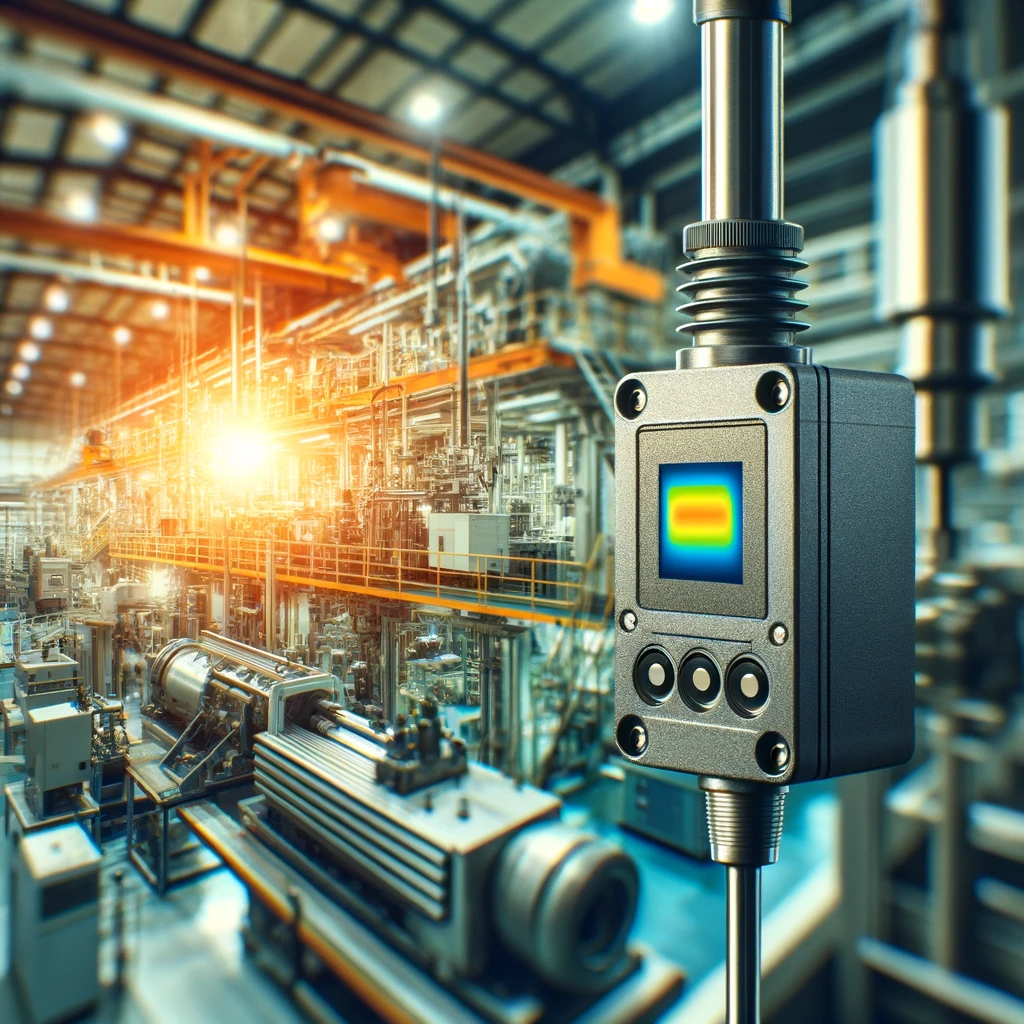
As a technology enthusiast, I am constantly amazed by the advancements in sensor architectures that have revolutionized various industries. From healthcare to smart homes, power-efficient sensors have become the backbone of modern systems. This article explores the latest developments in sensor design, integration of low-power microcontrollers, energy harvesting techniques, advances in battery technology, and wireless communication. Join me on this journey as we delve into the world of power-efficient sensor architectures and discover their immense potential.
Importance of Power-Efficient Sensors
One must understand the importance of power-efficient sensors in order to fully appreciate the advancements in sensor architectures. In today’s world, where energy conservation and sustainability are paramount, the development and deployment of energy-efficient sensors have become crucial. Energy efficient sensor manufacturing aims to minimize the power consumption of sensors during their production, reducing the overall environmental impact. This involves utilizing materials and processes that require less energy and produce fewer greenhouse gas emissions. On the other hand, power efficient sensor deployment focuses on optimizing the energy usage of sensors during operation. By reducing power consumption, these sensors extend battery life, decrease the need for frequent battery replacements, and ultimately contribute to a more sustainable and cost-effective solution. Therefore, the importance of power-efficient sensors cannot be overstated in the pursuit of a greener and more efficient future.
Evolution of Sensor Design
As we explore the evolution of sensor design, it becomes evident that energy-saving sensor innovations have played a crucial role in enhancing power efficiency. These advancements have led to the emergence of compact sensors that consume less energy while maintaining high performance levels. The evolution of sensor design has paved the way for more efficient and sustainable sensor solutions, enabling a wide range of applications in various industries.
Energy-Saving Sensor Innovations
In my experience, through the evolution of sensor design, I have observed a significant increase in energy-saving sensor innovations that rely on the integration of advanced algorithms and efficient hardware. These advancements have been particularly beneficial for industries such as smart grid technologies and sustainable agriculture, where energy efficiency is a critical factor.
In the realm of smart grid technologies, energy-saving sensor innovations have played a vital role in optimizing power distribution and consumption. These sensors are capable of collecting real-time data on energy usage, allowing for more accurate monitoring and control of electricity flow. By identifying areas of inefficiency and implementing targeted solutions, smart grid technologies can significantly reduce energy waste and improve overall grid reliability.
In sustainable agriculture, energy-saving sensor innovations have revolutionized farming practices. These sensors can monitor various environmental parameters, such as soil moisture, temperature, and light intensity, providing farmers with valuable insights into crop health and resource management. By optimizing irrigation and fertilization practices based on real-time data, farmers can minimize energy consumption while maximizing crop yield, ultimately leading to a more sustainable and environmentally friendly approach to agriculture.
Emergence of Compact Sensors
Over the years, I have witnessed the emergence of a multitude of compact sensors that have revolutionized the field of sensor design. These sensors, manufactured using compact sensor manufacturing techniques, have paved the way for a new era of power efficient sensor applications.
With their small size and lightweight construction, compact sensors offer a range of benefits including improved portability, reduced energy consumption, and enhanced functionality. These sensors are designed to be highly efficient in capturing and transmitting data, making them ideal for various applications such as smart home systems, wearable devices, and Internet of Things (IoT) applications.
The emergence of compact sensors has not only improved the efficiency of sensor technology but has also opened up new possibilities for a wide range of industries. As technology continues to advance, we can expect further advancements in compact sensor design, leading to even more power-efficient and versatile sensor applications.
Integration of Low-Power Microcontrollers
I will now discuss the integration of low-power microcontrollers in power-efficient sensor architectures. This involves optimizing the power consumption of microcontrollers to ensure energy efficiency in sensor systems. By minimizing power consumption, low-power microcontrollers enable longer battery life and reduce the overall energy consumption of sensor applications. This integration plays a crucial role in achieving power efficiency and extending the operational lifespan of sensor devices.
Energy-Efficient Sensor Integration
Intending to achieve power efficiency, the integration of low-power microcontrollers plays a crucial role in energy-efficient sensor integration. By incorporating energy-saving sensor algorithms and power-efficient sensor networks, these microcontrollers can significantly reduce the power consumption of sensor systems. Low-power microcontrollers are designed to operate at low voltages and consume minimal power during both active and idle states. They are equipped with features such as sleep modes, which allow them to conserve energy when not in use. Additionally, these microcontrollers are optimized for low-power operation, utilizing techniques such as clock gating and power gating to minimize power consumption. By integrating low-power microcontrollers into sensor systems, energy efficiency can be greatly improved, leading to longer battery life and reduced environmental impact.
Microcontroller Power Optimization
To achieve power efficiency, integrating low-power microcontrollers is crucial in optimizing the power consumption of sensor systems. Microcontroller power consumption can significantly impact the overall energy efficiency of a sensor system. By utilizing power saving techniques for microcontrollers, we can minimize energy consumption and extend the battery life of the system. Some key techniques for microcontroller power optimization include:
- Sleep mode: This mode allows the microcontroller to enter a low-power state when it is not actively processing data. By reducing the clock frequency and disabling unnecessary peripherals, the microcontroller can operate with minimal power consumption.
- Wake-on-event: This technique enables the microcontroller to wake up only when specific events occur, such as a sensor reading exceeding a threshold. By avoiding continuous operation, power consumption is significantly reduced.
- Dynamic voltage scaling: Adjusting the operating voltage of the microcontroller based on the processing requirements can help optimize power consumption. Lowering the voltage during idle or low activity periods reduces power consumption without sacrificing performance.
Low-Power Sensor Applications
The integration of low-power microcontrollers into sensor applications enhances power efficiency. This is particularly important in the context of wearable devices and environmental monitoring, where long battery life is crucial. By using low-power microcontrollers, sensor applications can achieve longer operating times and reduce the need for frequent battery replacements or recharging.
To illustrate the benefits of integrating low-power microcontrollers, consider the following table:
| Sensor Application | Power Consumption (mW) |
|---|---|
| Traditional Sensor | 100 |
| Low-Power Sensor | 10 |
| Power Savings | 90% |
As shown in the table, the use of low-power microcontrollers in sensor applications can result in significant power savings, reducing power consumption by up to 90%. This enables wearable devices to last longer on a single charge and allows environmental monitoring systems to operate for extended periods without requiring frequent maintenance. Overall, the integration of low-power microcontrollers is a crucial step towards achieving power-efficient sensor architectures.
Energy Harvesting Techniques for Sensors
The advancements in power-efficient sensor architectures have allowed sensors to generate their power by utilizing energy harvesting techniques. I’ve analyzed how these techniques have revolutionized the field of wireless sensor networks.
- Solar Energy Harvesting: Sensors can now harness energy from sunlight using solar panels. This renewable energy source provides a consistent and reliable power supply for sensors.
- Vibration Energy Harvesting: Sensors can convert mechanical vibrations into electrical energy, allowing them to harvest power from their surrounding environment.
- RF Energy Harvesting: By capturing and converting radio frequency (RF) signals, sensors can extract energy from the airwaves, eliminating the need for batteries or wired power sources.
These energy harvesting techniques enhance the autonomy and longevity of sensors, enabling them to operate in remote or hard-to-reach locations without the need for frequent battery replacements. As a result, wireless sensor networks can now be deployed more efficiently and effectively, providing valuable data for various applications.
Advances in Battery Technology
Having explored energy harvesting techniques for sensors, I can now delve into the advancements in battery technology that have further enhanced the power efficiency of sensor architectures. Advances in renewable energy sources have paved the way for the development of more efficient and compact batteries, enabling sensors to operate for longer periods without the need for frequent battery replacements. These advancements have had a significant impact on transportation, where power-efficient sensors play a crucial role in improving safety and efficiency. By utilizing power-efficient sensors, vehicles can monitor their surroundings, detect obstacles, and make real-time decisions, leading to reduced accidents and improved fuel efficiency. The integration of advanced battery technology in sensor architectures has not only increased the lifespan of sensors but also contributed to the overall sustainability and reliability of sensor-based systems.
Miniaturization and Power Efficiency
One key aspect of miniaturization and power efficiency in sensor architectures is the use of compact and energy-efficient components. These advancements have a significant impact on environmental monitoring and sustainability.
- The development of smaller sensors allows for easier deployment in various environments, expanding their applications in environmental monitoring.
- Energy-efficient components reduce power consumption, enabling longer battery life or the use of alternative power sources such as solar energy.
- Miniaturization also leads to reduced material usage, contributing to sustainability efforts by minimizing waste and decreasing the environmental footprint of sensor production.
Role of Machine Learning in Power Optimization
Machine learning plays a pivotal role in optimizing power efficiency in sensor architectures. By leveraging algorithms and models, machine learning enables sensors to intelligently adapt their power consumption based on changing environmental conditions and user requirements. This optimization process involves several steps, such as data collection, feature extraction, and model training. Machine learning algorithms can analyze large volumes of sensor data to identify patterns and make accurate predictions about future power consumption. This information can then be used to dynamically adjust power settings and optimize energy usage. However, there are challenges in implementing energy-efficient sensors using machine learning. These include the need for efficient data processing and storage, as well as the development of lightweight machine learning models that can run on resource-constrained sensor devices. Overcoming these challenges is crucial for achieving power-efficient sensor architectures and enabling the widespread adoption of energy-saving technologies.
Sensor Fusion for Energy Conservation
To achieve energy conservation, sensor fusion plays a crucial role in integrating and analyzing data from multiple sensors. By combining information from different sensors, sensor fusion techniques can provide a more comprehensive understanding of the environment and enable more efficient energy usage in power efficient sensor networks.
Here are three key benefits of sensor fusion for energy conservation:
- Improved accuracy: Sensor fusion allows for the integration of data from multiple sensors, which can enhance the accuracy of measurements and reduce errors. This enables better decision-making and more efficient use of energy resources.
- Reduced power consumption: By combining data from different sensors, sensor fusion techniques can help identify patterns and correlations, allowing for smarter energy management. This can lead to optimized power usage, reducing overall power consumption and increasing the lifespan of the sensor network.
- Enhanced reliability: Sensor fusion enables redundancy and fault tolerance by using multiple sensors to verify and cross-validate measurements. This improves the reliability of the system and reduces the risk of false alarms or missed events, resulting in more efficient energy utilization.
Wireless Communication and Power Efficiency
Continuing from the previous subtopic, I integrated wireless communication into the sensor fusion techniques for enhanced power efficiency in my research. Wireless communication offers numerous benefits in terms of power efficiency in sensor networks. By eliminating the need for physical wires, it reduces the energy consumption associated with transmitting data. Additionally, wireless communication allows for more flexibility in sensor placement, enabling optimal positioning for data collection. Moreover, advancements in wireless charging technology further contribute to the power efficiency of sensor networks. Wireless charging eliminates the need for battery replacements, reducing downtime and maintenance costs. This technology enables continuous operation of energy efficient sensor networks, ensuring uninterrupted data collection and analysis. Overall, incorporating wireless communication and wireless charging technology into sensor networks is crucial for achieving enhanced power efficiency and maximizing the lifespan of the sensors.
Impact of Power-Efficient Sensors on Healthcare
I integrated wireless communication into sensor fusion techniques for enhanced power efficiency in my research, and the impact of power-efficient sensors on healthcare is significant. Power-efficient sensors have revolutionized healthcare by enabling real-time monitoring and data collection, leading to improved patient care and health outcomes. Here are three key impacts of power-efficient sensors on healthcare:
- Environmental monitoring: Power-efficient sensors allow for continuous monitoring of environmental factors such as temperature, humidity, and air quality. This enables healthcare facilities to maintain optimal conditions for patient comfort and safety, as well as prevent the spread of infectious diseases.
- Advancements in wearable sensor technology: Power-efficient sensors have made wearable devices more practical and accessible. These devices can monitor vital signs, activity levels, and sleep patterns, providing valuable insights for chronic disease management and preventive care.
- Remote patient monitoring: Power-efficient sensors enable healthcare providers to monitor patients’ health conditions in real-time. This allows for early detection of complications and timely interventions, reducing hospital readmissions and improving patient outcomes.
Energy-Efficient Sensors in Smart Homes
In my research on power-efficient sensors and their impact on healthcare, I also explored the application of energy-efficient sensors in smart homes. Energy-efficient sensor networks play a crucial role in monitoring and controlling various aspects of a smart home, leading to improved energy management and reduced environmental impact. These sensors are designed to minimize power consumption while still providing accurate and reliable data. By integrating these sensors into a smart grid system, homeowners can effectively monitor and optimize their energy usage based on real-time data. This integration enables the smart grid to balance the demand and supply of electricity, resulting in reduced energy wastage and cost savings. Energy-efficient sensors in smart homes not only enhance convenience and comfort but also contribute to a sustainable and energy-efficient future.
Future Prospects and Challenges in Sensor Architectures
Energy-efficient sensor architectures present exciting opportunities for the future, as they address the challenges of improving performance and reducing power consumption in sensor systems. The advancement of sensor technology brings with it several future challenges that need to be overcome to fully exploit the potential of these architectures:
- Miniaturization: Shrinking sensor components while maintaining or even improving their functionality is a key challenge. Smaller sensors enable more compact and portable devices with a wide range of applications.
- Integration: Integrating multiple sensors into a single device is crucial for achieving higher accuracy and reliability. However, this poses challenges in terms of sensor compatibility, signal processing, and power management.
- Data Processing: As sensors generate vast amounts of data, efficient data processing techniques will be essential to extract meaningful information and reduce power consumption.
Addressing these challenges will drive further advancements in sensor technology, enabling the development of more power-efficient and intelligent sensor architectures.




